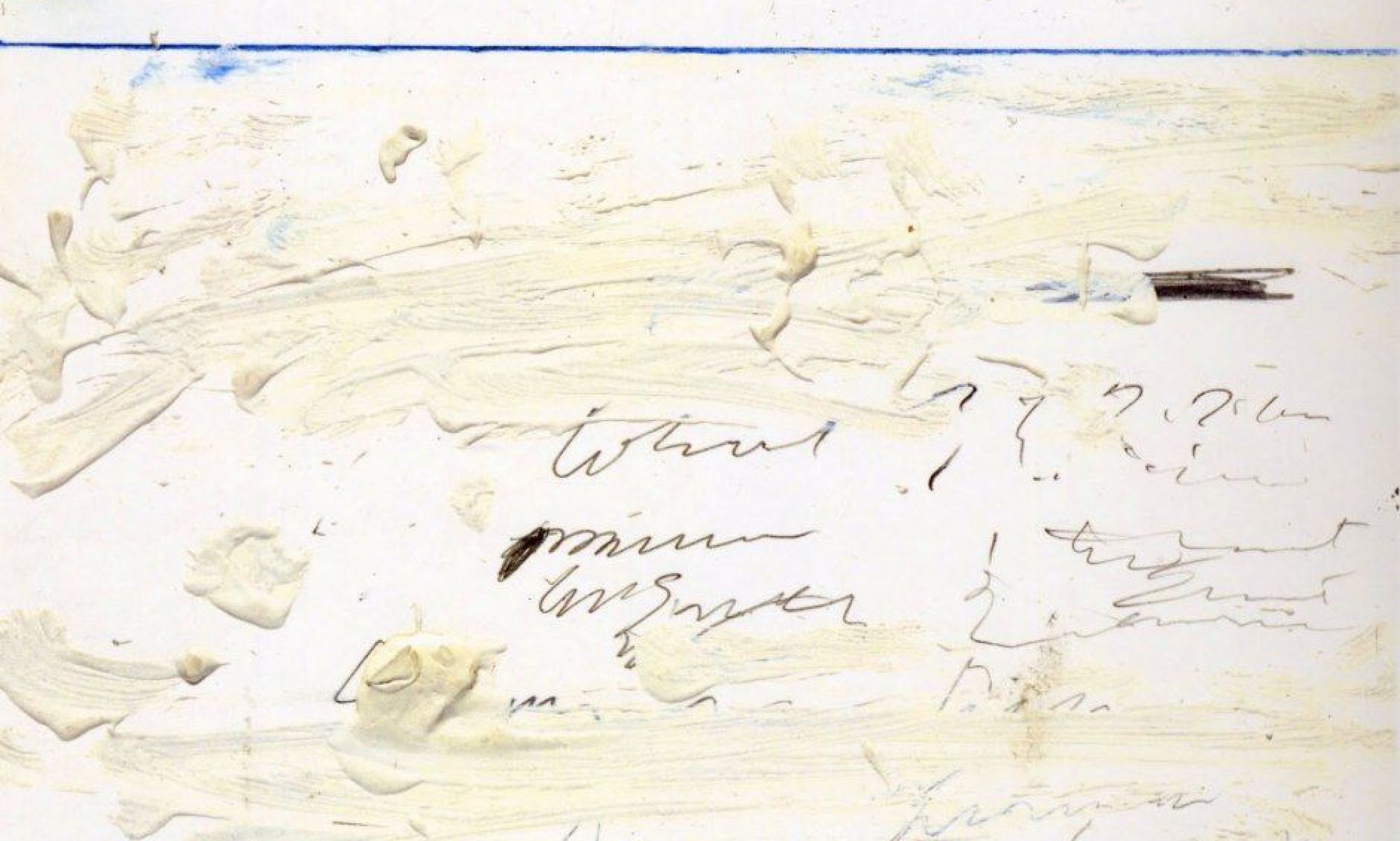We began with an exercise that I hope we can keep with us: simply looking at an urn (OK, a coffee cup) in the center of the room, and looking at our looking; then taking a moment to find a word or phrase that might somehow attach to the urn, or our experience of it. (But which?) The variety was telling: I remember glaze, dynamic, rain over a seascape (or something like that), reflection and also reflective. What a range! Words that capture visual effects, but also name a problem of how much seeing is seeing yourself (reflected in the glaze, or in what you say about it); words that seem to hold the object steady, but others (like dynamic) that acknowledge the time it takes to look at something that stands still, and the change that can happen to you, or to the object, in that time.
That experience gave us a preliminary reference for the claims of the theorists we had read. Lessing’s insistence on the difference between visual art and poetry as a difference between actions and bodies, extension in time and extension in space, the moment and the narrative, felt a little too simple—as important as the fantasy of a painting’s instantaneity may be. Lessing seemed to fit in Mitchell’s category of “ekphrastic fear,” the worry that language might lose its purity, its rationality, its detachment in confusing itself with images. Mitchell also gave is the idea of “ekphrastic indifference,” the simple confidence that word and image are never interchangeable; and “ekphrastic hope”: the idea that poetic language aspires to the composition of a picture, that they can expand each other’s powers; Horace’s ut pictura poesis, as the picture, so poetry.
We spent the rest of the class exploring Keats’ “Ode on a Grecian Urn” as a reckoning with these questions, by turns philosophical and appetitive in its address to the unanswering urn (unanswering, at least, until the very final lines). It is not a descriptive poem in the sense of adopting the vocabulary of the art of sculpture or painting, line or color or form; instead, it narrates a couple of episodes depicted on the urn’s surface (the ambiguous chase of the maidens by the gods, or mean—how much violence is suspended there?—and the sacrificial procession and the abandoned town). The speaker’s longing to sustain a desire before consummation, to sublimate his own poetry into a toneless song, to abstract from the fever and fret of this world—can an image spare us from disappointment, even from death, just by being still? And how could a poem ever sustain that poise? We pondered those last lines, their profundity, their banality; their circularity, closed off by a chiasmus, rounded like the O in “woe,” or like the mouth of an urn. The poem seemed to take its energy from the impossibility of its ambitions…
…which puts us all in an interesting position for Monday, as we try to close the circle, making an image of a line. Impossible project, or new liberty?
